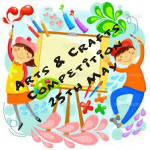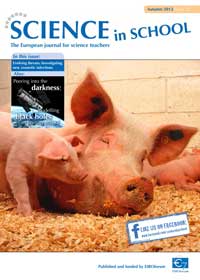Natural Sciences
now browsing by category
Primary STEM Learning magazine

The Primary STEM Learning autumn magazine is a brilliant read for primary schools. Articles include, spooky STEM activities to do for Halloween, how to incorporate science into mathematics and English lessons, and everything you will need to know about British astronaut Tim Peake blasting off into Space this December!
Also included are expert opinion pieces on a range of STEM subjects and a full list of CPD activities with the National Science Learning Network and National STEM Centre.
![]() >>>Click here to download the magazine<<<<
>>>Click here to download the magazine<<<<
Everything ESL
You may or may not be familiar with this website by Judie Haynes from New Jersey. It offers lesson plans, vocabulary, teaching tips and resources (some free, others not). See in particular this nice link on animal classification and categorization. Lots of different levels. I’m ticking category 1 ESO but you’ll find material for other levels. Just enter a search term in the EverythingESL search box.
Evolution Webquest
Esta es una actividad tipo Web-Quest preparada para trabajar parte de el tema de EVOLUCIÓN con alumnos de 4º ESO. En ordenadores con conexión a internet durante una sesión de 50 minutos y una vez que ya tienen unas bases mínimas sobre teoría de la evolución, deben en primer lugar el cuestionario (son un total de 14 preguntas) y después sabiendo lo que se pregunta, contestar conusltando los enlaces y las presentaciones de referencia que se proponen.
Deben trabajar a fondo para poder contestar en el tiempo a todas la preguntas y al final de la sesión entregarlas resuletas.
First give a look at this Evolution game and then watch this video Teacher’s Guide to: Evolutionary theory and answer the quiz questions.
WATCH:
http://www.youtube.com/watch?v=nbdm_ZBWwgo
AFTER THAT, VISIT AND READ SOME OF THESE PRESENTATIONS:
ANSWER THESE QUESTIONS:
1. Define Evolution.
2. What did Darwin notice thanks to the Beagle voyage?
3. Write the main points of Lamarckian evolution theory.
4. Write the main points of Darwinian evolution theory.
5. Why is Lyell related to Darwin’s theory?
6. When did Darwin do the Beagle voyage?
7. How old was he by then?
8. Explain the key concept he found in the finches to propose his theory.
9. When did he publish the book presenting his theory of evolution? What was the title of this book?
10. What are homologous organs? Give example.
11. Make a list with the evidences of evolution.
12. Who thought of a very similar theory to Darwin´s one?
13. What is the basis of Neodarwinism?
14. What are the causes of variation according to Neodarwinism?
15. Find out what «Co-Evolution» is.









 D5 Creation
D5 Creation